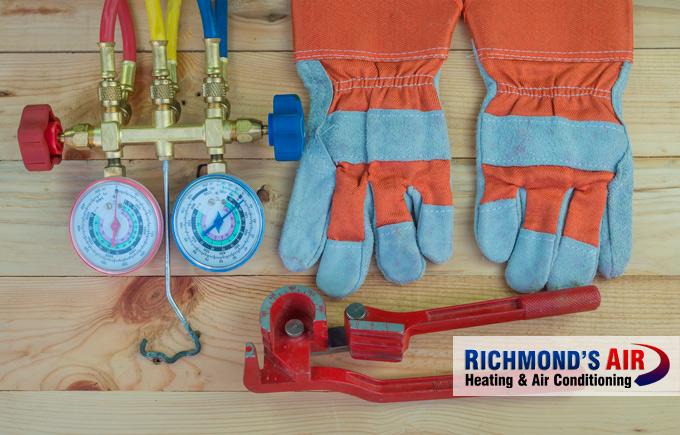Common heating and cooling terms, abbreviations and phrases every homeowner should know
There are many abbreviations and terms used in the heating and cooling industry that may or may not be known by the average homeowner. Becoming familiar with some of the terms enables consumers to make more informed decisions when purchasing new systems or when having a current system repaired.
Here’s a handful of words, abbreviations and terms you should know in regards to your residential heating, cooling and ventilation (HVAC) system.
A
- AFUE. AFUE stands for Annual Fuel Utilization Efficiency. The rating explains the efficiency of a gas furnace to use fuel to create energy. For example, a rating of 80 indicates that 80 percent of the fuel is used to create heat while the other 20 percent is lost through exhaust.
- All-in-one system. These are heating and cooling appliances housed in one cabinet. The systems are typically found beside or on top of a home or business.
B
- BTU. This stands for British Thermal Unit and describes the amount of heat created by a furnace or the amount of heat removed by an air conditioner. One BTU represents the amount of heat emitted by a lighted match. Learn more.
C
- Capacity. This refers to the production ability of heating or cooling systems. The appliance’s capacity is commonly referred to as the BTUs the unit produces.
- Carbon monoxide (CO). This is the name of a colorless, odorless and poisonous gas that occurs as a byproduct of burned fuel. If heating appliances are not properly vented, the gas enters the living environment and causes potentially lethal consequences. For this reason, HVAC systems need routine maintenance and inspections.
- CFM. This means Cubic Feet per Minute. The rating represents the amount of airflow that an air conditioning unit produces.
- Compressor. The mechanical component is a vital part of an air conditioner or heat pump. This part is responsible for regulating the pressure needed to circulate refrigerant through the system to produce a cooling effect.
- Condenser coil. The coil is responsible for removing heat from the refrigerant in order to change the substance from a gas into a liquid.
- Cycling. Heating and cooling systems cycle when they turn on and off. Newer systems cycle less often, which leads to less wear and tear on the appliance while providing greater efficiency.
D
- Dampers. These components consist of plates installed within the ductwork, which open or close to direct and regulate airflow.
E
- Energy Star®. The Environmental Protection Agency (EPA) developed a program designed to reduce energy consumption. Manufacturers were encouraged to create products that required less energy while providing greater performance. Heating, cooling and other appliances bearing the Energy Star label are created to be up to 15 percent more efficient than previously manufactured models.
F
- FER. This stands for Fan Energy Rating in compliance with a federal regulation that stipulated that furnace fans must have a certain degree of airflow, require less energy and reduce the carbon footprint.
H
- HEPA filters. High Efficiency Particulate Absorbing filters are designed to remove allergens, dirt and other types of debris from the air by capturing the particles in the filter, which makes the interior air cleaner.
- HVAC. This is an acronym for heating, ventilation and air conditioning. The systems may also feature air cleaning and moisture control technology.
- Hybrid comfort system. These systems combine electric heat pumps with gas furnaces to enhance the heating capability in colder climates.
L
- Load calculation. This calculation is based on the energy requirements of a home or business following an extensive analysis to determine the appropriate HVAC system. Learn more.
M
- Matched systems. These systems feature heating and cooling units that match each other in terms of capacity and efficiency in order to ensure the best and most efficient functions.
R
- R-22. This refrigerant, commonly known as “freon,” was used in refrigerators and air conditioners for cooling for decades. However, the substance was determined as harmful and banned for use by the EPA. As of 2010, appliances contain a coolant called R-410A.
S
- SEER. This acronym refers to the Seasonal Energy Efficiency Ratio, which represents the efficiency of heating and cooling systems. The higher the rating, the more efficient the system. Learn more.
- Spine Fin™. This technology refers to coils that are created with greater efficiency. The device contains thousands of miniature fins, which are attached to aluminum refrigerant tubing. The fins increase the surface area to better dispel and remove more heat from building interiors.
T
- Two-stage heating/cooling. These systems are designed to function using a variable speed in order to save energy. The appliances select the appropriate speed to achieve the level of heating or cooling desired.
V
- Variable-speed motor. The motors in the system are designed to operate at the appropriate speed to cool or heat the air with greater efficiency while requiring less energy. The motor functions in cooperation with the system’s thermostat to maintain a stable temperature, which reduces the need for the system to continually turn on or off.
 Read reviews
Read reviews









